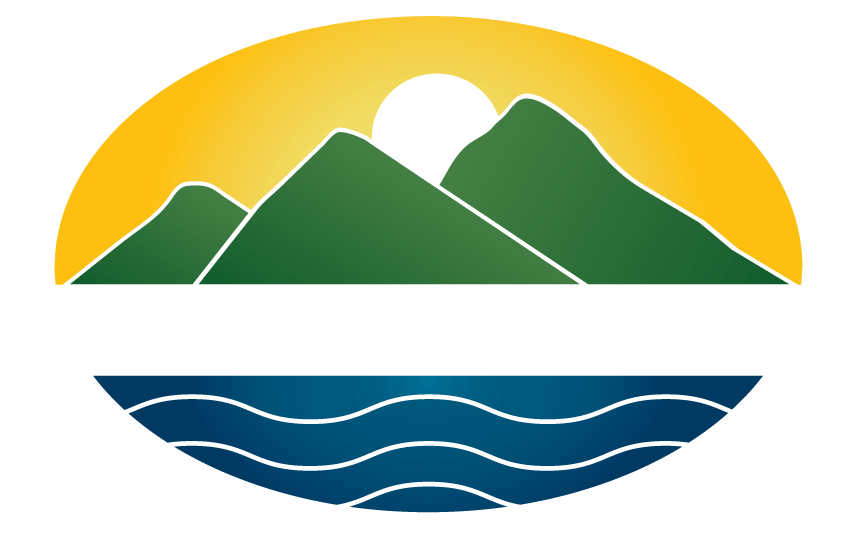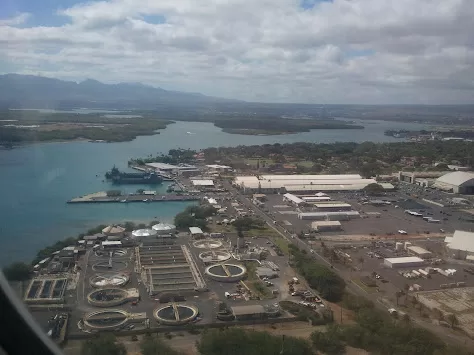Thee Navy identified five dozen active contamination sites at Joint Base Pearl-Harbor- Hickam that it is decontaminating. The largest project in size focuses on contaminated sediments in Pearl Harbor.
The contaminants include underground fuel plumes, dioxin, arsenic, lead, antimony, PCBs, Polynuclear Aromatic Hydrocarbons (PAH), Benzene, Toluene, Ethylbenzene, Xylenes, and metals.
The Superfund law to clean up the nation`s worst contamination sites was passed in 1980. Officially known as the Comprehensive Environmental Response, Compensation and Liability Act (CERCLA), the regulations address major non-military contamination.
The Defense Environmental Restoration Program (DERP) was formally established by Congress in 1986 to provide for the cleanup of Department of Defense (DoD) sites under the jurisdiction of the Secretary of Defense.
During the mid-1980s, the DoD formed Technical Review Committees (TRC) as a means of enabling the community to review and comment on technical documents pertaining to environmental restoration efforts. Army TRC: Schofield
In the mid-1990s more formal Restoration Advisory Boards (RAB) took the place of TRCs.
RABs membership consist of a military co-chair and community members. The community members elect a community co-chair. With the exception of the military co-chair, the military, military contractors, federal, state, and county regulators attend the meetings but are not RAB members.
RABs seek to inform the military of community perspectives, interests, priorities, and suggested remedies, and to inform the greeter public about military decontamination projects, programs, and policies.
The DoD funded and controlled DERP program is separate from the EPA funded and controlled Superfund program. DERP must adhere to CERCLA rules but also includes sites that would not be covered by CERCLA.
Several hundred RABs had been formed in virtually all U.S. States, the District of Columbia, Puerto Rico, and Guam–representing the Army, the Navy, the Marine Corps, the Air Force, the Defense Logistics Agency (DLA), the National Guard Bureau (NGB), and Formerly Used Defense Sites (FUDS).
The exact number of Hawai`i Restoration Advisory Boards that have existed, do exist, or were proposed, is difficult to determine. Air Force RABs: Hickam, Bellows, Waianae, and Central Oahu (catch all including Pacific). Navy RABs: Joint Base Pearl Harbor – Hickam (formerly, Pearl Harbor), Waianae Coast/Lualualei, and Central Oahu. Marine Corps: Waikane. U.S. Army Corps of Engineers (USACE) RAB: Waikoloa Maneuver Area (Big Island).
USACE managed Formerly Used Defense Sites (FUDS): Big Island: Popoki; Maui: Kanahena Point; Oahu: Pacific Jungle, Heeia/Pali, Waikane; and Molokai.
During World War II the Air Force built two massive Fuel Storage Annexes buried in mauka regions of O`ahu: the Waikakalaua Fuel Storage Annex in Wahiawa and the Kipapa Gulch Fuel Storage Annex in Waipio that consisted of three horizontal tanks, each three times the length of a football field and each with a capacity of 2,400,000 gallons of fuel.
The Air Force constructed a 20-mile Petroleum, Oils and Lubricants (POL) pipeline to Hickam AFB. The Hickam Air Force RAB was involved with visiting, monitoring, and reviewing, the Air Force`s closing and cleaning out of the system in the late 1990s.
DERP does not (and hence the RABs do not) cover routine operations such as the Red Hill Fuel Storage facility and active firing ranges.
On Oct. 1, 2010, Naval Station Pearl Harbor joined with Hickam Air Force Base to become Joint Base Pearl Harbor-Hickam. The Hickam Air Force RAB and the Pearl Harbor Navy RAB merged into the Joint Base Pearl Harbor–Hickam RAB.
A temporary pause in the Navy RABs occurred between 2018 and 2022. The Navy is relaunching four O`ahu RABs: Pearl Harbor–Hickam, Waianae, Central Oahu, and Kaneohe-Waikane.
The first Pearl Harbor–Hickam RAB met on March 31, 2022, with about 30 people virtually attending. The other RAB meetings will follow shortly.
The Joint Base Pearl Harbor-Hickam RAB members are Steven Saepoff (military co-chair of all four Navy RABs), Cruz J. Vina, Tom Lenchanko, Guy Inouye (former community co-chair), Kyle Kajihiro, and Henry Curtis (elected community co-chair at the meeting last week).
Non RAB members in attendance included the Editor-In-Chief of the University of Hawaiʻi Law Review, representatives from the Hawai’i People’s Fund, Hara Realty LLC, AECOM, Naval Facilities Engineering Systems Command (NAMFAC), University of Hawaii at Manoa, Neighborhood Boards, Ka Lahui Hawaii, Mālama Pu’uloa Program, and the DOH Office of Hazard Evaluation and Emergency Response.
Community RAB members asserted the need for a website to host all RAB documents, and a need to discuss Perfluorooctane Sulfonate (PFOS), Perfluorooctanoic Acid (PFOA), an oil spill site near Red Hill, impacts to microorganisms, bioaccumulation, and natural springs covered up by the base that may impact the flow of contaminants.
The Navy identified several areas on ongoing concern and remediation including the Underwater Munitions site in the Pearl Harbor Navy Sea Defense Area, Pearl Harbor Sediments Site where fish tissue samples reveal high levels of PCBs, and metals, former Industrial Wastewater Treatment Plant, former power plant, Pearl City Peninsula Landfill and Burn Area Site, former Oahu Sugar Company Herbicide/Fertilizer Mixing Area on the Waipio Peninsula, Waipahu Ash Landfill (WALF) on Waipio Peninsula, former Aiea Laundry, Makalapa Crater Early Disposal Area, and the Time-Critical Removal Action for contaminated soil/debris at Radford High School (RHS).
DERP includes a domestic facility or site that was formerly owned by, leased by, possessed by, or otherwise under the jurisdiction of the Secretary of Defense or the Components, including governmental entities that are the legal predecessors of DoD or the Components; or property where accountability rested with DoD but where the activities at the property were conducted by contractors or areas where materials released at a facility or site covered by the law have migrated or come to be placed.
DERP triggers include a release of CERCLA hazardous substances, CERCLA pollutants, CERCLA contaminants; petroleum, oil, or lubricants (POL); hazardous wastes; hazardous waste constituents; low-level radioactive materials; low-level radioactive wastes; military munitions; an imminent and substantial endangerment to the public health or welfare or to the environment; and the demolition and removal of unsafe buildings and structures.
DERP does not cover releases at facilities or sites outside of the United States, its territories, and possessions; responses to address releases at facilities or sites that are not on real property that is or was owned, controlled, or otherwise under the jurisdiction of DoD; releases caused by the non-military activities; releases that occur solely as a result of an act of war; and any routine operation, management, or maintenance at an operating DoD facility or site that is not part of an environmental restoration activity, including routine range maintenance and sustainment activities at operational ranges.


0 Comments